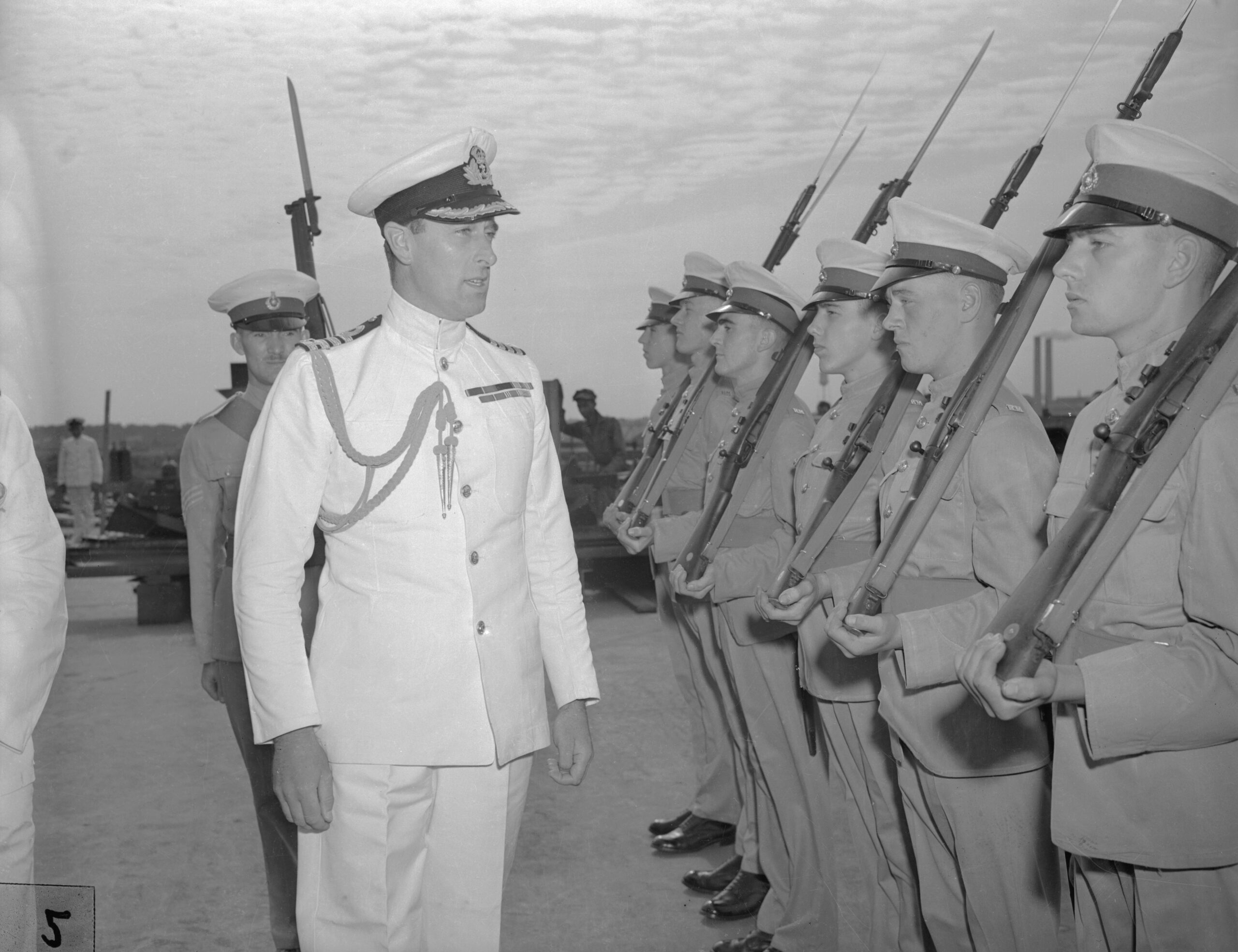
When it comes to royal marriages, historically members of royal families around the world have married other royals. This has changed as royal families have modernized, but it makes sense: Royals are more likely to be hanging out with other royals. Such is the case for Lord Louis "Dickie" Mountbatten, the uncle of Prince Philip and mentor to Prince Charles who was infamously killed, and Maria Romanov, a member of the Russian royal family killed by the Bolsheviks in 1918.
The two first met back in 1910 when they were 10 and 11 years old. While their encounter was fleeting, Maria immediately made an impact on the young Dickie. He later noted, "Oh, they were lovely, and terribly sweet, far more beautiful than their photographs show. I was crackers about Marie, and was determined to marry her. She was absolutely lovely. I keep her photograph in my bedroom — always have."
Of course, history would take both Dickie and Maria down starkly different paths. Sadly, Maria would die at the age of 19.
Dickie's family had close ties to the Russian royal family. His father was a first cousin of Tsar Nicholas II, Maria's father. Dickie's mother was the older sister of Maria's mother, Alexandra. So this meant that, among other things, Dickie and Maria were actually first cousins as well. Of course, royals marrying cousins or other relatives isn't particularly unheard of.
More from LittleThings: Meghan Markle's Sister Samantha Is Allegedly Behind Some Of The Worst Sussex Hate Accounts
Maria, of course, was a member of the Russian royal family who were killed in July 1918. She had four siblings: Olga, Tatiana, Anastasia, and Alexi. The entire family was killed at the same time, but rumors that Anastasia managed to survived persisted for 90 years after their deaths.
Maria was celebrated for being beautiful in both spirit and her physical self. The son of the family's doctor, Gleb Botkin, once said Maria was "admittedly the prettiest of the four — a typical Russian beauty, rather plump, with cheeks red as apples."
While Dickie's first name is actually Louis, the story of how he got his nickname actually has a lot to do with the Romanovs. His entire name was Louis Francis Albert Victor Nicholas of Battenberg at birth, and as he grew older, his siblings wanted to have a nickname for him.
He explained, "My brothers and sisters always wanted to call me Nicky, but my parents pointed out that it would lead to confusion with the Tsar. They then for some curious reason suggested Dickie, and my mother was most amused because they obviously didn't know that her private pet name for my father was 'Dickie Bird.'"
The families met up in 1910 for a get-together, and it was here that Dickie and Maria met one another for the first, and only, time. While Dickie memorialized his feelings about Maria, it's unknown how she felt about him as her diaries from 1910 aren't available.
However, her mother Alexandra did advise Maria about a crush she had that year. "Now that you are a big girl, you must be more careful and not show those feelings … One must not let others see what one feels inside."
Dickie and Maria became pen pals and exchanged quite a few letters. While they never saw one another again, Dickie's older brother George traveled to Russia in 1914 and spent time with the family. In fact, he and Tatiana became close and began exchanging letters of their own. George went on to marry Countess Nadejda de Torby, who gave birth to their first daughter in 1917, while Tatiana and her family were under house arrest in Russia.
They named the baby Tatiana.
When Dickie's family learned of the Russian Revolution and its impact on the Romanovs, they had little choice but to watch the events unfold from far away.
"We had very little news of the family after the Bolsheviks took over. We all hoped that they would ultimately be sent into exile, but we feared the worst. Even when it happened, it was a long time before we heard the details, which were quite horrible … these horrible deeds cast a shadow over the whole of my family for a very long time."
The revolution broke out in Russia in 1917. Tsarina Alexandra Feodorovna was advised to move her family to safety, but she hesitated to do so as all five children came down with the measles at the same time. Nicholas II abdicated the throne, and then the family was arrested and imprisoned.
Throughout their imprisonment, rumors abounded that the guards who watched the family grew fond of them and even that friendships developed. There is little evidence to support these claims.
The night before the family was killed, their kitchen boy, who had also befriended Alexei, was sent away. The family protested, unaware that the boy had been sent anyway because guards were worried they might accidentally kill him in the assault planned for the following day.
The family was woken up late on July 16 and told to move to a lower level of the house for their safety. Most reports indicate the family had no idea they were going to be executed. The family was left alone for a while, and then a guard returned and read the order of execution aloud. Guards opened fire immediately.
For decades after their deaths, many believed that one or more family members had survived the assault. This is likely because all reports indicate that Maria and Anastasia were not killed right away. Over the years, many people claimed to be, in fact, the members of the family who had survived. Two women who claimed to be the sisters were even taken in by a priest in the Ural Mountains and were buried under the names Anastasia and Maria Nikolaevna when they died in 1964.
Bodies of most of the members of the family and the others who were killed alongside them (their doctor, cook, valet, and a maid) were found in a mass grave in 1991. Eventually, Russian archeologists unearthed two more bodies, believed to be Maria and Anastasia, in 2007. This discovery finally put the idea of an escaped Romanov to rest.




